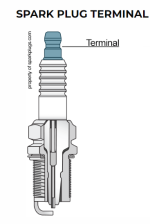Tankerpilot75
Well Known Member
I just completed addressing several squawks (nothing FWF) and went to do a check flight after bringing the aircraft home. Both PMags dropped 200 RPM doing pre takeoff mag check at around 1850 rpm. Since I had recently upgraded my old GRT EIS motherboard to accommodate the need for greater Tach rpm sensitivity due to electronic ignition and because I was only going to orbit the field - I accepted the higher drop to see what happens in flight.
First flight every thing looked normal (CHTs, EGTs, Oil Pressure and Oil temperatures). Takeoff/climb to 3,500 feet felt normal. After three trip around the airport, I landed and taxied back to the ramp. Did another mag check. Once again there was a 200 rpm drop - both sides.
I again took off and started climbing to 5,500 feet. Airplane felt sluggish in climb. Monitoring engine data saw cylinders 2,3 &4 normal (2&3 CHTs between 380 to 395, #4 around 415 with EGTs all around 1190. Number 1 cylinder’s CHT however was dropping while its EGT closely aligned with the three other EGTs. I returned, landed and while taxiing to my hangar #1 cylinder CHT began to rise back towards 300 degrees. Another mag check - same 200 rpm drop with another mag check.
I would normally think I had a #1 CHT probe issue or cylinder spark failure issue but with the excessive mag check rpm drop on both sides it seems likely something else. The PMags were just installed on my rebuilt engine in March and ran great on the trip back to OKC from OSH. (Had a prop strike at Airventure last year). I only have eight and ahalf hours on the engine since inspect/rebuild and it ran smooth on the trip home.
Called EMag and talked to the service technician about the issue. He suggested I go through the troubleshooting guide to better identify the problem. I will do this next week with the help of an experienced PMag owner but in passing I did ask the tech what he thought was likely the problem. He said “spark plug failure.”
My questions:
1. Has anyone else experienced a similar situation?
2. The lower rpm drop on the mag check was on both sides. Can a single plug failure cause both sides to read low on a run up mag check?
3. If a #1 cylinder’s plug failed and caused the dropping/declining CHT wouldn’t it’s EGT also drop?
Brain trust please explain.
First flight every thing looked normal (CHTs, EGTs, Oil Pressure and Oil temperatures). Takeoff/climb to 3,500 feet felt normal. After three trip around the airport, I landed and taxied back to the ramp. Did another mag check. Once again there was a 200 rpm drop - both sides.
I again took off and started climbing to 5,500 feet. Airplane felt sluggish in climb. Monitoring engine data saw cylinders 2,3 &4 normal (2&3 CHTs between 380 to 395, #4 around 415 with EGTs all around 1190. Number 1 cylinder’s CHT however was dropping while its EGT closely aligned with the three other EGTs. I returned, landed and while taxiing to my hangar #1 cylinder CHT began to rise back towards 300 degrees. Another mag check - same 200 rpm drop with another mag check.
I would normally think I had a #1 CHT probe issue or cylinder spark failure issue but with the excessive mag check rpm drop on both sides it seems likely something else. The PMags were just installed on my rebuilt engine in March and ran great on the trip back to OKC from OSH. (Had a prop strike at Airventure last year). I only have eight and ahalf hours on the engine since inspect/rebuild and it ran smooth on the trip home.
Called EMag and talked to the service technician about the issue. He suggested I go through the troubleshooting guide to better identify the problem. I will do this next week with the help of an experienced PMag owner but in passing I did ask the tech what he thought was likely the problem. He said “spark plug failure.”
My questions:
1. Has anyone else experienced a similar situation?
2. The lower rpm drop on the mag check was on both sides. Can a single plug failure cause both sides to read low on a run up mag check?
3. If a #1 cylinder’s plug failed and caused the dropping/declining CHT wouldn’t it’s EGT also drop?
Brain trust please explain.





